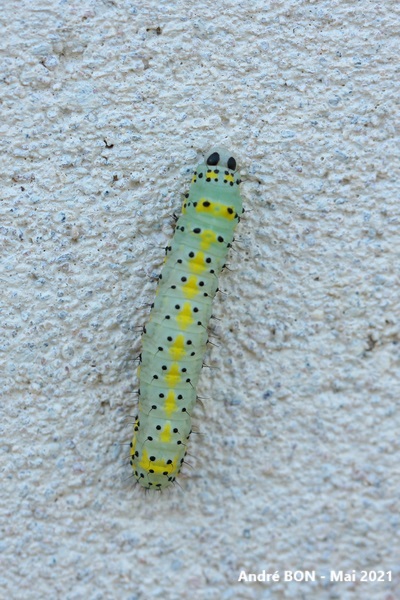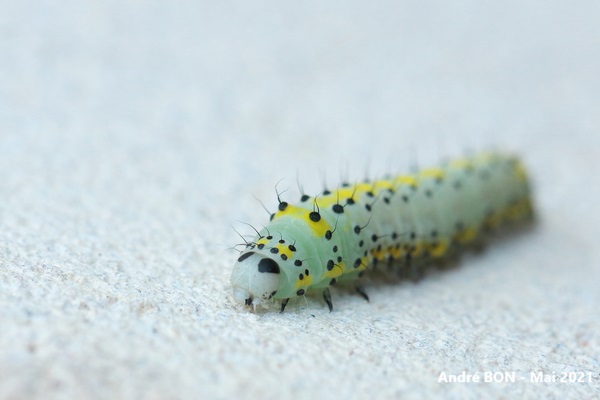


| Figure of Eight (Diloba caeruleocephala (Linnaeus, 1758)) |



|
|
Scientific name: Diloba caeruleocephala (Linnaeus, 1758) Common name: Figure of Eight French name: Double oméga, Tête bleue. Order: Lepidoptera Suborder: Heterocera Family: Noctuidae Subfamily: Dilobinae Wingspan: 30-40 mm. Biotope: Woodland edges, shrubby wastelands, orchards. Geographic area: Europe except Nordic regions, North Africa, Middle East, Asia Minor, Iran and Kazakhstan. Flight time: August to December. Number of generations : 1 Caterpillar: Greyish white to light greenish (even more blackish in early stages of development) with rows of yellow dorsal and lateral spots and black setigerous (setae-bearing) warts. The top of the head has two large black spots. Host plant: Various shrubs and fruit trees including Hawthorn (Crataegus), Blackthorn (Prunus spinosa), Apple tree (Malus). |
The Figure of Eight does not have the usual appearance of members of the Noctuidae family. Males have heavily pectinated antennae and females have a thick, hairy body. The forewings are grey-brown in colour with purple highlights. The reniform and orbicular spots, light yellow in colour, are both omega or 8 shaped. You can see black post-median and subterminal lines, as well as a black line close to the tornus. The hindwings are yellowish white. |
| [To know more about the Figure of Eight] [Next picture] [Top] |

|
Here is a very nice caterpillar that is easy to identify. |
| [To know more about the Figure of Eight] [Next picture] [Previous picture] [Top] |

|
Top view to clearly see the alignment of yellow dorsal spots. |
| [To know more about the Figure of Eight] [Previous picture] [Top] |

|
I am used to observing many caterpillars on the walls of this old farm. It is then very difficult to know the host plant. |